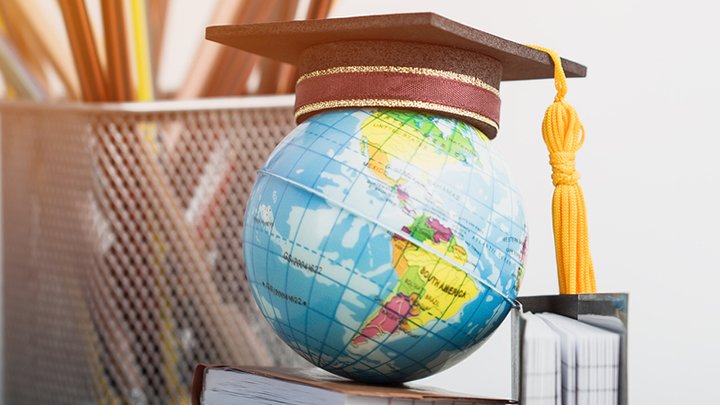International education challenges are a term used to describe the numerous challenges that come with navigating the intricate world of global education. These difficulties cover a wide range of problems, from unequal access to high-quality education to linguistic and cultural divides. These obstacles have become more severe in recent years due to the globalization of education, necessitating a coordinated effort to solve them all at once. International education challenges are global in nature, impacting politicians, educators, and students everywhere. They are not limited to any one area.
Fostering an inclusive, equitable, and linked global education system requires an understanding of these issues and strategies for minimizing them. As we examine the complex web of issues surrounding international education, it is clear that cooperative solutions are necessary to get past these obstacles and establish a setting in which educational opportunities are available to everyone, regardless of socioeconomic or geographic limitations. In order to create a future where learning transcends national boundaries, we must all work together to find answers to the problems facing international education.

Finding Your Way Through the Difficult Landscape of International Education Challenges
In the current epoch of heightened globalization, pursuing education on a global scale is beset by an array of obstacles encompassing geographical, cultural, and systemic aspects. The phrase “international education challenges” refers to a broad range of barriers that prevent high-quality education from developing and becoming more widely available. In order to reduce the complexity associated with international education, this article explores the nuances of these issues by looking at important variables, cultural effects, language barriers, regional differences, technological advancements, and international initiatives.
Recognizing the Environment of International Education Challenges
A multitude of interrelated variables that obstruct the global quest of knowledge are at the core of problems in international education. Disparities in educational infrastructure, resources, and opportunities are a result of economic inequality, which is frequently glaringly obvious between rich and underdeveloped countries. Sub-Saharan Africa, for example, confronts several difficulties because of poor school accessibility, high dropout rates, and a teacher shortage that reflects the region’s general economic limitations.
Cultural Variations and Their Effects
The entire nature of educational experiences is shaped by cultural variations, which are an essential component of the issues associated with international education. These variations show themselves in different ways that affect curriculum design, student expectations, and instructional strategies. Gender roles and cultural norms, for instance, can affect women’s access to education in the Middle East, highlighting the need for culturally appropriate policy. In addition to establishing inclusive learning settings, closing these cultural divides helps students become global citizens by promoting intercultural communication and cooperation.
Read Also: Assessment and Evaluation in Global Education
The Global Education Tapestry in Linguistics
When it comes to the difficulties of foreign schooling, language serves as both a bridge and a barrier. In educational contexts, linguistic variety can make it difficult for students to communicate and understand one other. Language obstacles might prevent children from making academic progress in areas where teachers and students speak different languages.
Conversely, proactive language-inclusive policies can improve communication and comprehension by leveraging linguistic diversity as a strength. Initiatives in India, for example, have effectively recognized the multilingual nature of the people and promoted diversity by incorporating various languages into the curriculum.
Localized Dynamics
International education issues are a worldwide concern, yet because of unique regional dynamics, some places are burdened disproportionately with them. The rapid economic growth and urbanization in Southeast Asia has resulted in differences in educational attainment between urban and rural areas. Despite their economic expansion, nations like China and India struggle to provide their large people with high-quality education.
Geopolitical conflicts exacerbate the situation, as evidenced by the disruption of schooling in war-torn areas such as Afghanistan and Syria. International cooperation and specialized strategies are needed to address these region-specific issues.
Innovations in Technology as Change Agents
The 21st century sees technology as a potent ally in the struggle against global issues in education. Digital resources and online platforms possess the ability to surpass geographic limitations, offering instructional materials to pupils residing in distant locations. E-learning platforms and virtual classrooms provide adaptable learning options that meet a range of demands. Initiatives like “One Laptop per Child” in sub-Saharan Africa seek to close the digital divide by making sure that technology supports education rather than interferes with it.
Read Also: Impact of International Education on Economic Development
Global Programs and Regulations Dedicated to Inclusivity
Governments and international organizations agree that coordinated worldwide activities and policies are desperately needed to address the problems facing international education. Goal 4 (Quality Education) of the Sustainable Development Goals (SDGs) emphasizes the significance of education in accomplishing more general development goals.
Governments, non-governmental organizations, and organizations like as the World Bank and UNESCO work together to put policies that emphasize accessibility, gender equality, and inclusivity into action. One such example is the Global Partnership for Education (GPE), which aims to improve educational systems and give disadvantaged students access to high-quality instruction.
Creative Remedies: Case Studies and Ideal Procedures
Despite the difficulties, there are encouraging instances of creative fixes and industry best practices that highlight how resilient educational systems can be. Finland’s education system, which is frequently praised for its effectiveness, places a strong emphasis on student welfare, equality, and a less regimented approach to schooling.
The Queen Rania Teacher Academy in Jordan is a Middle East institution that trains teachers to design inclusive classroom environments that meet the requirements of a wide range of students. These illustrations show that overcoming obstacles in foreign education calls for a trifecta of institutional adjustments, cultural awareness, and an unwavering dedication to inclusivity.
What Part Do Stakeholders Play?
The resolution of issues pertaining to international education demands the proactive participation of multiple actors, such as governmental bodies, non-governmental organizations, educational institutions, and private enterprises. It is imperative that governments give priority to education in their policy objectives, provide adequate funding, and enact changes that foster inclusivity. NGOs are essential for enhancing government efforts, especially in areas of conflict or economic hardship. Innovative solutions can result from working with the private sector; one example is forming alliances with tech firms to improve digital infrastructure.
Moving Towards an Internationally Diverse Education System
The problems facing international education are intricate, varied, and firmly ingrained in the world’s socioeconomic systems. However, developing a globally inclusive educational environment requires acknowledging these issues and actively pursuing solutions. Embracing linguistic and cultural diversity, utilizing technology, putting tailored regulations into place, and so on—the road ahead requires a thorough and cooperative approach.
We clear the path for a time when high-quality education will be available to everyone, bridging national boundaries and fostering a more just and integrated global community by tackling the problems associated with international education head-on.
Read Also: International Student Mentorship
What are the main causes of the problems in international education?
Economic differences, restricted access to resources, and unequal distribution of educational opportunities are only a few of the variables that contribute to international education challenges. Global economic disparities erect obstacles that prevent students from underprivileged backgrounds or emerging countries from receiving high-quality education.
In addition, social unrest, armed conflict, and political instability all contribute to interruptions in education, making it difficult for impacted areas to create safe and productive learning environments. The potential for educational growth is further limited by the lack of trained teachers and the inadequate infrastructure.
What effects do cultural variations have on the global educational process?
Cultural disparities significantly influence how education is delivered globally. In educational environments, misconceptions and difficulties might arise due to differences in cultural norms, values, and communication methods. The way curricula are designed, how they are taught, and what the expectations are of the students can all differ.
Building an inclusive and stimulating learning environment requires bridging these cultural divides. Acknowledging and honoring cultural variety improves the educational process and gets pupils ready for a globalized society by encouraging intercultural communication and cooperation. Navigating the intricacies of issues in international education calls for the use of intercultural competency as a beneficial ability.
What part does language play in making the problems associated with international education worse or better?
Language plays a key role in the difficulties associated with foreign education, serving as a bridge as well as a barrier. The presence of language diversity in international educational environments might make it more difficult to communicate, teach, and transmit knowledge. When teachers and pupils don’t speak the same language, comprehension becomes difficult and impedes academic progress. Nonetheless, when efforts are made to offer language support, translation services, and curriculum that is inclusive of many languages, language can also act as a unifying factor. Using multilingual methods can promote inclusion by preventing language barriers from impeding access to high-quality education.

Which nations or areas are more impacted by the problems in international education, and why?
International education challenges are not uniformly distributed; some countries and regions have more severe issues than others. Because of political instability, inadequate infrastructure, and economic inequality, developing countries frequently have more challenges. Particularly impacted regions include sections of Southeast Asia, South Asia, and Sub-Saharan Africa. These regions face challenges like poor school accessibility, high dropout rates, and a teacher shortage.
In places like the Middle East, geopolitical conflicts are another factor contributing to disruptions in schooling. Targeted efforts and international cooperation are needed to address these regional differences and guarantee that every country has an equal chance to overcome its unique problems.
How can we use technology to address and get over barriers to international education?
By making resources more accessible, encouraging teamwork, and improving learning outcomes, technology offers a potent tool for tackling issues in international education. Digital resources and online platforms have the potential to overcome geographic barriers by offering educational materials and opportunities to students residing in rural or underprivileged places. Diverse requirements can be accommodated in flexible and inclusive learning environments through the use of virtual classrooms and e-learning platforms.
Technology also makes it easier for educators around the world to collaborate and communicate, which promotes the sharing of best practices. Even if technology has a lot to offer, it is imperative to address concerns about the digital divide and make sure that all students can benefit equally from new developments in the field.
Read also: Impact of International Education on Economic Development

International Education Challenges: What programs and laws are being put into place globally to lessen the problems in education and encourage inclusivity?
Global cooperation is needed to address the issues surrounding international education, which will result in the adoption of numerous initiatives and regulations. Governments, non-governmental organizations, and educational institutions work together with organizations such as the World Bank and UNESCO to create policies that support inclusion and deal with systemic problems. To guarantee high-quality education for everyone, initiatives concentrate on issues including curriculum creation, teacher preparation, and infrastructure development.
International frameworks that highlight the role that education plays in accomplishing more comprehensive goals for global development include the Sustainable Development Goals (SDGs). Policies that place a high priority on accessibility, gender equality, and inclusivity help to create a more equitable global education environment.
A thorough grasp of the interrelated elements affecting the global educational scene is necessary to navigate the intricacies of international education challenges. The global educational landscape is shaped in part by technical breakthroughs, multinational initiatives, geographical variances, cultural and language distinctions, and economic inequities. Overcoming the obstacles provided by international education issues, establishing a global education system that is accessible and equitable for all requires an understanding of the complexities of these challenges as well as the implementation of inclusive policies and initiatives.
Trust you found our article on International education Challenges helpful. Follow our website for more interesting articles.
